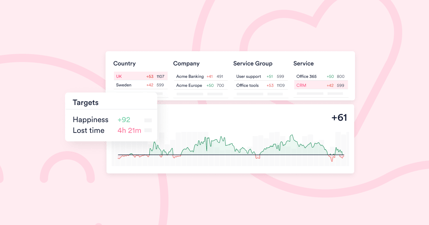The year 2025 is set to be a remarkable transformation for the IT industry, defined by advancements and paradoxes. IT leaders navigate a contradictory landscape as organizations grapple with evolving technologies and shifting priorities. Budgets are simultaneously expanding and shrinking; AI is simplifying and complicating work, and productivity is being redefined. Beneath it all, one question looms large: how do we balance technological innovation with the human experience?
The Budget Conundrum
IT leaders wrestle with the same dilemma every year: will this year’s budget be enough? In 2025, the answer depends on who you ask. A recent Forrester report suggests that around 40% of IT leaders anticipate modest budget increases of 5–10%. While this growth is a positive sign, it hardly matches the pace of technological change. At the same time, other segments of the industry—particularly IT support—are seeing budgets slashed, with some expecting cuts of up to 50%.
The rise of AI fuels this contradictory trend. Companies like Klarna, which replaced hundreds of support staff with AI while maintaining customer satisfaction, exemplify how automation can drive efficiency and cut costs. However, implementing AI isn’t free; it requires substantial investment in software upgrades, training, and new workflows. The challenge for 2025 will be balancing costs without compromising the innovation needed to thrive.
The Rise (and Challenges) of AI
AI is no longer futuristic; it’s embedded in everyday IT systems, often hidden within software updates. Tools powered by generative AI are streamlining work processes, automating repetitive tasks, and even coaching employees in real time. For instance, service desk agents can now access AI-driven documentation that summarizes user interactions or offers sentiment analysis to guide difficult conversations. These tools are transforming how work gets done.
But AI is not a magic solution. Adopting it requires more than just flipping a switch. Employees must learn new workflows, adapt to the technology’s quirks, and navigate increasingly complex problems that AI can’t solve. The initial learning curve can sometimes outweigh the benefits, leading to frustration or inefficiencies. In 2025, the success of AI will depend on how well organizations support their people in embracing these new tools.
The Productivity Paradox
AI promises to save time by handling mundane tasks, but what happens to the time it frees up? Theoretically, this time should be spent on high-value work like strategic planning, creative problem-solving, or professional development. In practice, the story is more complicated. Employees often review and moderate AI-generated content or adapt to new workflows, which can feel like extra work rather than less.
This so-called productivity paradox highlights a critical gap between capability and usability. AI’s full potential will only be realized when tools are designed with the end user in mind. For organizations, this means investing in technology and the training and resources needed to use it effectively.
Reclaiming the Human Experience
As AI becomes more ingrained in our work lives, the human experience takes center stage. In a world of hybrid work—where employees balance time between the office and home and increasingly work alongside AI—the question isn’t just how to use technology but how to make it work for people.
2025 could be the year organizations rethink productivity. Does it involve squeezing more work into shorter periods, or could it create space for employees to recharge and focus on meaningful tasks? Some countries have already begun experimenting with shorter workweeks, with promising results. By giving employees time to rest and recover, organizations may unlock deeper creativity and sustained engagement.
Navigating Rapid Change
Few industries evolve as quickly as IT, and 2025 is shaping up to be a year of breakneck change. While this pace of innovation is exciting, it also comes with risks. Employees are more likely to feel overwhelmed or burned out, especially if they aren’t given adequate support during transitions. Change is no longer a one-time event; it’s a constant state of being.
Organizations must be empathetic in how they manage this change. Simple steps, like ensuring employees have access to human support when dealing with AI systems, can make a big difference. Listening to employees and incorporating their feedback into decisions about tools and processes is equally critical. After all, the people doing the work are often the best source of insight.
A Practical Approach to 2025
For IT leaders, 2025 offers both challenges and opportunities. The key is to approach the year with a clear strategy:
- Think Beyond Numbers: Budgets are important, but how you allocate them matters more. Focus on areas like training and user-friendly tools that empower employees to do their best work.
- Prioritize Usability: Ensure new technologies are intuitive and accessible, minimizing the employee learning curve.
- Listen and Adapt: Regular feedback loops can help organizations stay aligned with employee needs and prevent small issues from becoming big problems.
- Embrace Balance: Use AI to increase output and create space for rest, reflection, and innovation.
The Road Ahead
2025 will be a year where contradictions reign, but the potential for profound transformation lies within those contradictions. By navigating these complexities with intention and care, organizations can adapt to change and thrive within it. Above all, as the IT industry continues to evolve, one truth remains: technology is only as good as the people using it.
Watch the latest episode of our IT Experience Podcast with guest Roy Atkinson - IT Trends 2025 - , where we explore the anticipated trends for 2025, focusing on budget predictions, the role of AI in IT support, and the importance of human experience in a rapidly changing technological landscape.



